Smartphone Lenses: Everything You Need To Know
In the beginning, God said let there be light, and there was light. And God saw the light, that it was good: and God divided the light from the darkness.
And God said, what’s the point of light if we can’t shoot B roll? And God said let there be movie cameras. And God saw The Godfather 2 (1974), and that it was great. But still preferred the first one somehow.
And God thought there should be movie cameras for everyone. So God said, let there be iPhone. And God saw the iPhone, that it was good, except for that huge notch in the screen. And God said, let there be a smaller notch. But Apple said, Jobs moves in mysterious ways…
And God said, let there be lenses
The first smartphone is said to have been invented in 1992. But I think most of us weren’t aware of smartphones until the first iPhone arrived in 2007. The first iPhone only had one rear facing camera but the iPhone 4, released in 2010, included a selfie camera too.
We had to wait 7 years for iPhones to include multiple rear lenses, with the launch of the iPhone X. Although the HTC One M8 had already introduced multiple rear cameras in 2014, the second sensor was only there to create a depth map for the first. The LG G5 introduced an extra wider lens in 2016, a year before the iPhone X.
But between 2007 and 2016, some clever folks had spotted an opportunity to give smartphone photographers and filmmakers extra lensing options. And so a whole industry was born dedicated to creating a variety of conversion lenses for mobile devices.
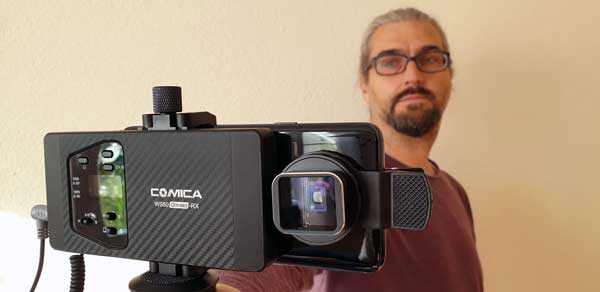
Conversion Lenses
Conversion lenses, sometimes known as secondary lenses, are designed to be used in conjunction with another lens. As smartphone filmmakers, the conversion lenses we know well are made by Moondog Labs, Moment, Ulanzi and others. Generally, they’re mounted to your device somehow, sitting over the top of the phone’s inbuilt lens.
Conversion lenses are simple in design, when compared to a prime lens used on a DSLR or mirrorless camera. While prime lenses come with controls for aperture and focus, conversion lenses do nothing but sit over an existing lens.
These secondary lenses have been designed for all kinds of cameras, not just smartphones. They can also be purchased for camcorders, point-and-shoot cameras and so on.
The purpose of a conversion lens is to convert the existing lens to get a different look. And I think it’s important to remember this when buying one. How will it work with the existing lenses of your device?
Problems With Conversion Lenses
Placing an extra lens over an inbuilt lens of a smartphone comes with potential problems. Look out for reduced image quality, particularly around the edges of the image.
Aberrations & Shadowing
Chromatic aberrations and shadowing are common issues, especially with cheaper lenses. While the centre of the lens might combine well with your inbuilt lens, the edges of the lens are where the issues often appear.
Illogical Combos
Make sure your lens combination makes sense. For example, placing a wide lens over an inbuilt telephoto lens (and visa versa) won’t do any good, as the 2 lenses cancel each other out.
Loss of Light
One side-effect of adding conversion lenses to existing lenses is there will be a reduction in the amount of light hitting the sensor. In low light situations, this might cause problems. However, in situations where too much light is a problem, like shooting outside in bright daylight, this might be desirable.
OIS & EIS
Your camera’s stabilisation might exaggerate any issues with the lens as it moves the image around. In addition, shadowing issues can show up. For example, if I use the Moondog Labs with the Samsung S9 and stabilisation switched on, as I move the camera, a shadow appears briefly at the side.
Focal Length
The focal length of a lens is determined by the distance between the optical centre of the lens and image plane (ie: camera sensor). The rule is: the longer the focal length the narrower the field of view. And the shorter the focal length, the wider the field of view.
In other words, the further the lens is from the sensor, the shallower the depth of field (and greater the magnification). That’s why telephoto lenses are often called long lenses, because they are literally longer. If you’ve ever spotted a sports photographer at a football game, you’ll see them using very long lenses.
And this is why smartphones tend to have wide lenses with a very deep depth of field (everything is in focus). Because the device is so thin it’s hard to design them with long lenses inbuilt.
So how does the Samsung S20 Ultra 100x Zoom Tele Lens Work?
Smartphone Periscope Lenses
You’d think it impossible to design a device with 100x telephoto and still keep the thin body. But recently, smartphone makers like Samsung and Huawei have included telephoto lenses with these higher magnification capabilities. To achieve this in the same way a normal camera works, the lens would need to protrude so far from the case it wouldn’t be practical.
So how is this done? Aside from the digital zoom aspect, this is achieved using what’s know as a periscope lens.
The periscope part of the mechanism is an angled mirror which allows the lens and sensor to be placed flat along the device. This way the lens and sensor can now be moved further apart without the lens protruding. And thus a longer focal length can be created in a device only a few millimetres thick.
Digital Zoom vs Optical Zoom
That Samsung 100x telephoto can’t be achieved using the periscope part of the lens alone. So, to add enough magnification to reach 100x, the Samsung S20 combines optical zoom with digital zoom.
While optical zoom is achieved using a physical mechanism, digital zoom works by enlarging the image and cropping it to the same frame ratio. The problem with digital magnification is that quality is lost. So, the further you zoom in the more pixilated and degraded the image becomes.
Pretty much all smartphones use digital zoom, which is why the common advice is not to ever use zoom with a smartphone camera. But with smartphones which use some form of optical zoom, images can be magnified to a certain level before the digital zoom kicks in.
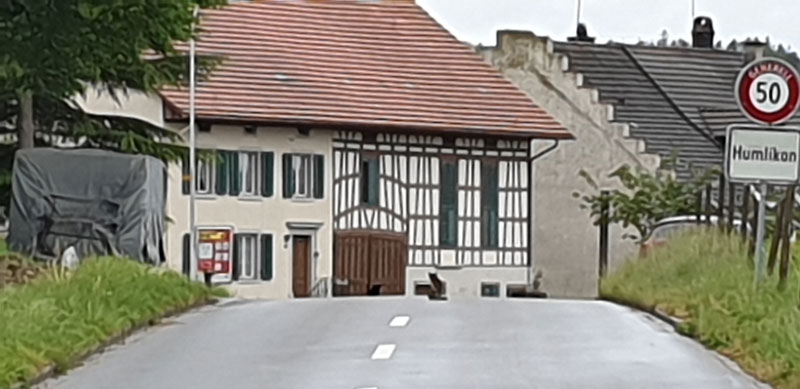
Note that digital zoom does not increase the focal length of the lens, therefore no extra shallow depth of field is created.
What Are Different Lenses Used For?
In general terms, photographers and cinematographers use telephoto lenses to get close to the subject and wide lenses to fit more in the frame.
At a basic level, lenses can be thought of in this simple, practical way. But if you want to develop your cinematography skills, you will need to think more deeply about what lenses can do. Because different lenses can be used to evoke a variety of feelings or to impose a particular style.
Telephoto
A telephoto lens narrows the field of view. At the same time, a telephoto allows you to get closer to the subject without moving the camera. In a sense, a telephoto lens is a bit like a telescope in the way it can magnify a distant image.
In the photography world, a lens is classed as a telephoto if it has a focal length of at least 60mm. They come in a number of focal lengths from medium telephoto (70-200mm) to super telephoto (longer than 300mm). Therefore, the conversion telephoto lenses for smartphones are mostly what would be considered a “normal” lens.
Photographers often use some form of telephoto lens for portrait photography. Usually, a telephoto lens creates a shallower depth of field and this means it’s easier to create an image where the background (and foreground) is out of focus. An out of focus background helps to separate it from the subject of the portrait.
Subject Distanced From Reality
In a sense, this really focuses our attention on the subject. But it can also create a feeling that the subject has less connection with the world, too. In other words, a telephoto can enhance a character’s introversion, or that a character is more focused on their inner world.
This is a frame from Drive (2011) shot by cinematographer Newton Thomas Sigel (Three Kings, Drive, Bohemian Rhapsody) using a telephoto lens.
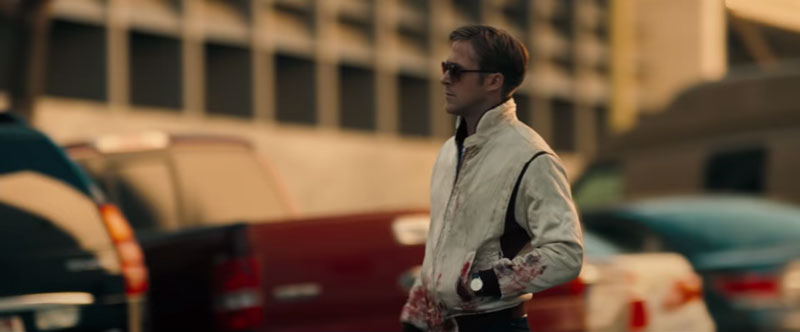
There’s no denying it’s an attractive look. The out of focus background adds a soft, dreamy feel to the image. It also pushes the audience’s attention onto the subject.
Sigel says the telephoto creates a separation between the viewer and the subject, as well as the subject and the world around them. Therefore, the long lens can create greater sense of the subject’s feeling of alienation. In addition, the lens gives the viewer a sense of being a distant, objective viewer.
In the image above, we the audience are viewing Ryan Gosling’s character from afar. Well, that would seem logical considering the long lens acts like a telescope, allowing us to spy on subjects without them knowing.
Depth of Field Adapter
Currently, the only way to get a shallow depth of field using a smartphone is to add a Depth of Field Adapter. This is an attachment that allows you to mount prime lenses to your device. Well known ones are made by Beastgrip and Ulanzi.
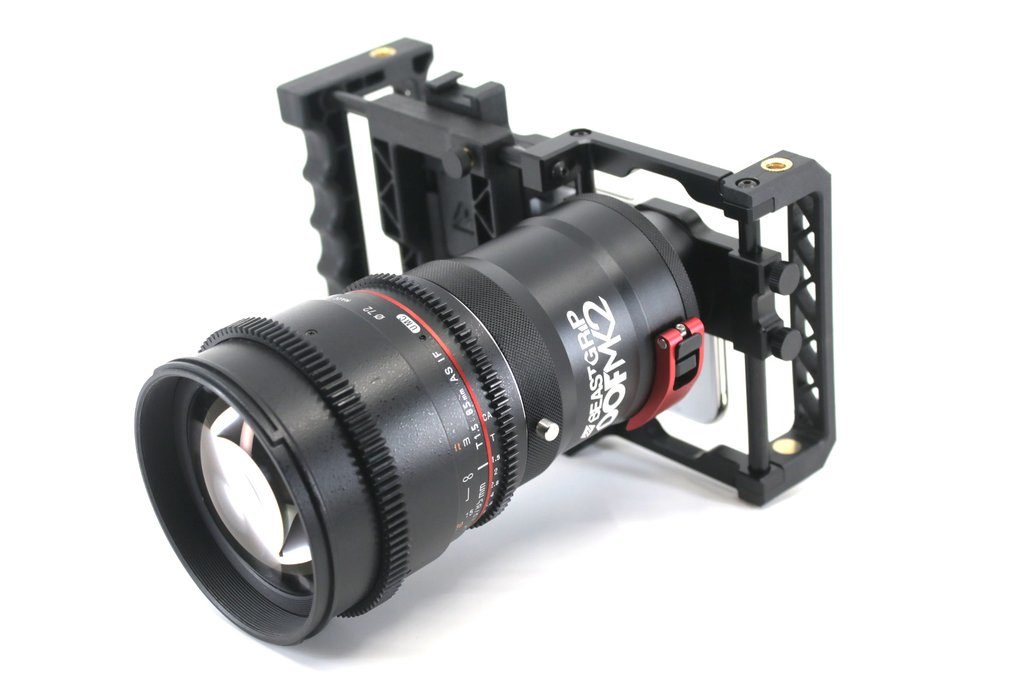 Find Beastgrip DoF Adapter on Amazon
Find Beastgrip DoF Adapter on Amazon
Find Ulanzi DoF Adapter on Amazon
Normal Lens
In photography and cinematography, a normal lens is a lens that reproduces a field of view that appears “natural” to human eyes. In 35mm film terms, this would be a 50-60mm equivalent.
Therefore, when it comes to smartphones, the normal lens is actually more equivalent to a cinematographer’s wide angle. But if you add, for example, a 58-60mm conversion lens, your smartphone wide becomes something like a normal lens equivalent.
This is a frame from Bohemian Rhapsody (2018) using a normal lens. From looking at the frame, I would say this is close to our smartphone + telephoto conversion lens setup. But you can see the background is only slightly out of focus, more like how our eyes would see things.
Find Moment 58mm “Telephoto” on Amazon
Find Sirui 60mm “Telephoto” on Amazon
Find Ulanzi 65mm “Telephoto” on Amazon
Wide Angle
A wide angle lens has a short focal length and therefore a wide depth of field. In other words, the nearer the lens is to the sensor, the deeper the focus. Therefore, when using a wide lens you will find the background is more in focus and there is less separation with the subject.
As a wide-angle lens brings more into frame, everything is shrunk in size. This means, to have a subject the same size within the frame, the camera needs to be moved closer. At this point, the big difference between tele and wide lenses is that more of the background will appear in the frame.

The wide-angle lens creates a greater perspective to the frame. For example, 2 objects at different distances from the camera will seem even further away from each other with a wide-angle lens than with a telephoto.
Cinematographer Newton Thomas Sigel says the viewer feels closer to the subject when a wide lens is used. Indeed, the camera is literally closer to the subject. However, at the same time the viewer may feel that the subject is more separated from other subjects in the scene.
In a sense, the wide angle makes the viewer intrude on the scene, as opposed to remaining as a distant voyeur. For that reason, says Sigel, this choice of lens creates a greater sense of intimacy between the audience and the subjects.
While for me, the telephoto is more intimate, as you can explore the subjects expression without having to move the camera so close they would find it disturbing. But I do understand Sigel’s point that using a wide angle lens brings the camera physically closer to the scene.
Read More: Best Wide Angle Lens for your Smartphone

Smartphone’s Normal Lens is a Wide Angle
We should remember a smartphone’s standard lens should be considered a wide-angle lens. This is mostly down to the size of the device. In addition, a wider lens is more useful for a point-and-shoot consumer camera designed to be used by all skill levels.
Ultra Wide Angle
Some smartphones such as the Samsung S20 Ultra offer lenses in the region of 120° or more. So we might consider these lenses as classed as ultra wide. In comparison, Moment 14mm fisheye lens provides a 170° field of view.
Extreme wide-angle lenses begin to distort the image so that straight lines become more noticeably curved. The most extreme wide-angle lenses are called fisheye lenses, as they give the impression we are viewing the world through the eye of a fish.
Fisheye lenses can create an extreme distortion of the image, although there are lenses designed to counter or remove this distortion. These lenses are known as rectilinear lenses. For example, the Moment 15mm Fisheye lens.
Find Moment 14mm fisheye on Amazon
Find Sirui 18mm Wide Angle Lens on Amazon
Anamorphic
Now that flagship smartphones often carry inbuilt telephoto and ultra wide options, there’s less need for conversion lenses. That said, the one lens which isn’t yet available inbuilt is the anamorphic.
Anamorphic lenses provide a means to capture a CinemaScope-style 2.39:1 ratio, without having to make a sacrifice in resolution that comes from simply cropping the final image. While an anamorphic lens is a form of wide lens, it only provides a wider horizontal field of view while keeping the vertical dimension unchanged.
And this is why an anamorphic lens gives such a distinctive look: ultra-wide rectangular aspect ratios and long horizontal lens flares.
Anamorphic lenses were invented during World War One to give tanks a wider field of view. They weren’t adopted by cinema, however, until the 1950s. It was then that Twentieth Century-Fox bought the rights to the technique to create its CinemaScope widescreen format. This was motivated by the need to compete with TV sets which studios feared might stop people wanting to go to the cinema.
Cinema Anamorphic vs Smartphone Anamorphic
Many high budget films are shot using anamorphic lenses. The list from 2019 includes Avengers: Endgame, John Wick: Chapter 3 – Parabellum, Rocketman and Shaft. In this frame from Shaft you can see one noticeable difference from anamorphic shot on a smartphone, using a Moondog Labs, Moment or other brand.
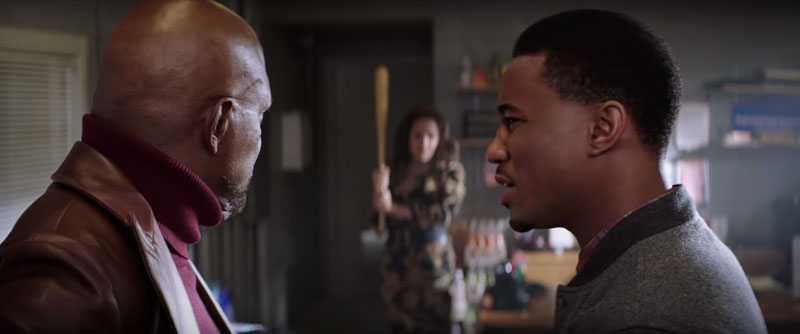
Now compare this to a frame from our smartphone shot series Silent Eye.
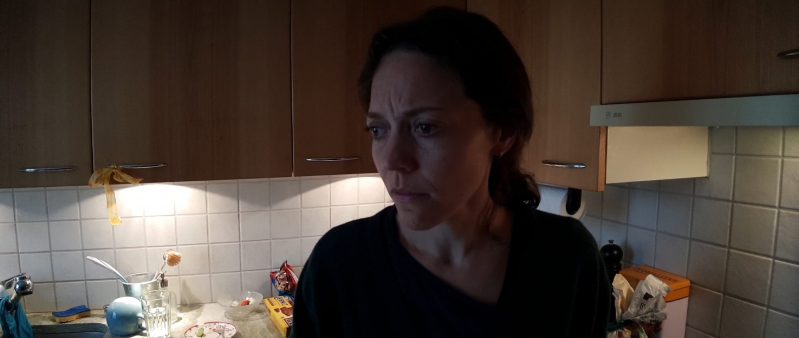
Putting all the quality differences aside, one obvious difference is the shallow depth of field evident in the first image (Alexa XT Plus equipped with Hawk V-Lite Anamorphic Lenses).
Regular anamorphic lenses, such as the Hawk V-Lite lenses come in a range of focal lengths. Whereas our smartphone anamorphic conversion lenses are limited by the focal length of the lens they convert. Note, if you want to try the Hawk V-Lites out you can hire a set for as little as $2500 (not sure if that’s the day rate).
Now compare the above frames to a frame from Drive (2011). Do you think this was shot with an anamorphic or a wide lens?
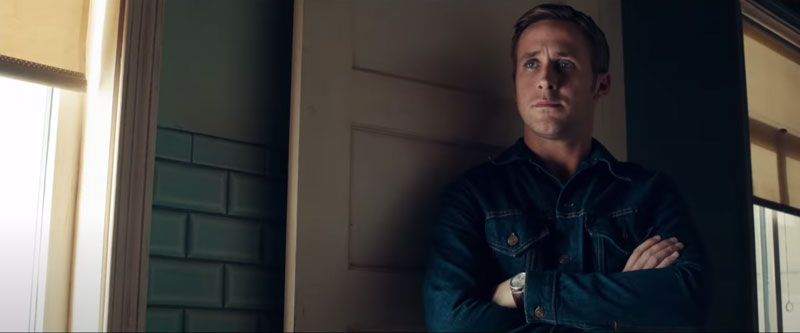
In fact, Drive was shot without using anamorphic lenses and this shot was captured using a regular wide angle lens. Other shots in this movie were captured using a mixture of wide, tele and normal lenses. The frame ratio is cropped to 2.35 : 1.
Note, some shots in Drive were captured using a Canon EOS 5D Mark II, with maximum 1080p video resolution. That HD video was cropped to the 2.35 : 1 ratio, discarding image information in the process.
Read More: Best Anamorphic for your Smartphone
Wider = Steadier
Bear in mind the wider the lens, the less problem there is with hand shake. Alternatively, the more telephoto the lens, the more handshake is exaggerated. This is all down to simple physics.
One reason why action cameras such as GoPro often use ultra wide angle lenses. They inherently create more stable-looking footage.
Eager to learn more?
Receive our newsletter featuring inspiring stories, no-budget filmmaking tips and comprehensive equipment reviews to help you turn your film projects into reality!
Simon Horrocks
Simon Horrocks is a screenwriter & filmmaker. His debut feature THIRD CONTACT was shot on a consumer camcorder and premiered at the BFI IMAX in 2013. His shot-on-smartphones sci-fi series SILENT EYE featured on Amazon Prime. He now runs a popular Patreon page which offers online courses for beginners, customised tips and more: www.patreon.com/SilentEye


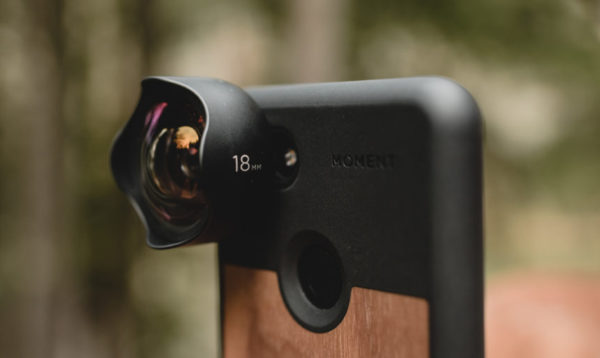
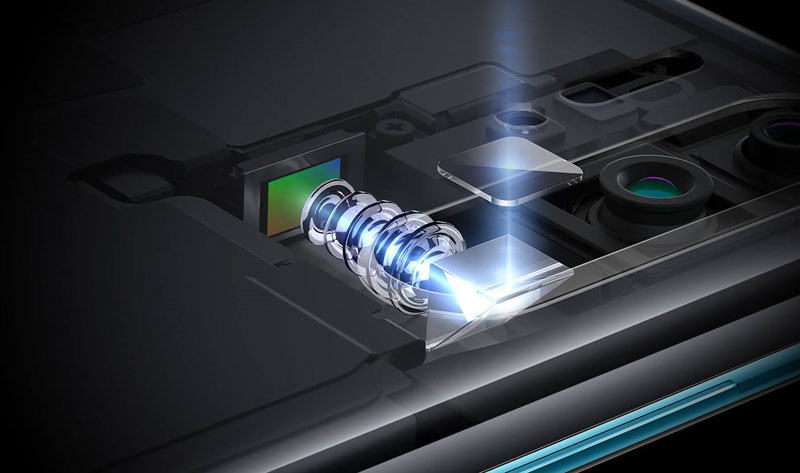
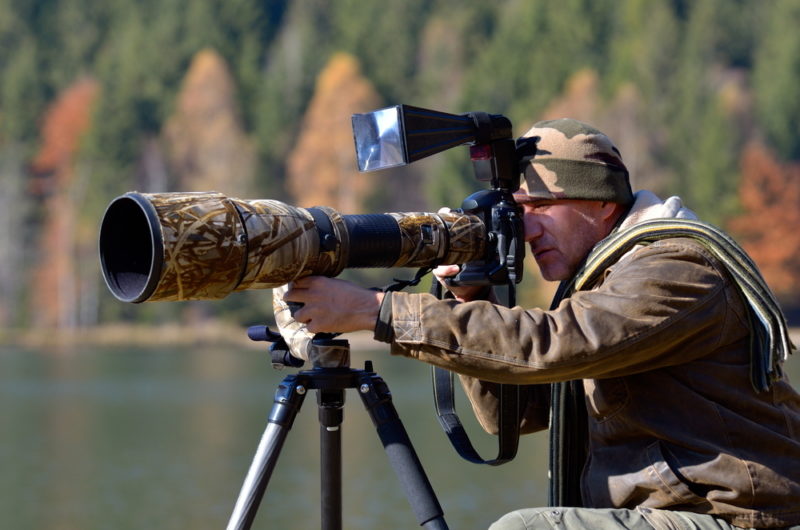
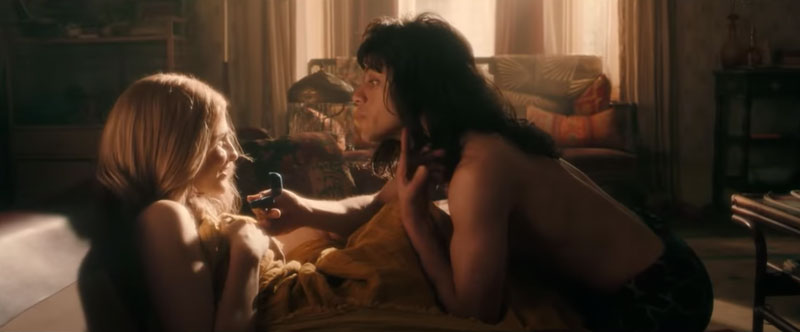
Wow mann!!! Thanks for such indepth information.